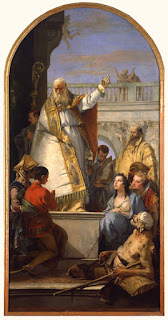O Savior, when the fearful storms of life around us press,
And we in vain for comfort seek when all is comfortless,
Then whisper Thou the sweet command which Thou on Thine hast laid:
"Let not your heart be troubled, nor let it be afraid."
- from hymn #365 in The Augustine Hymnbook, 19th century






























